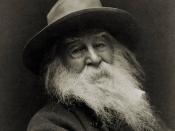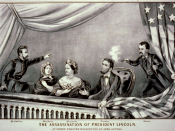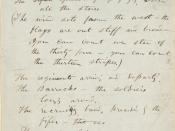Upon the Pedestal
Walt Whitman was born May 31, 1819 to a Quaker family, but his background and religious upbringing did not define the many achievements that he accomplished during his lifetime. Whitman was an American poet, essayist, journalist, and humanist whose poetry is immortalized because of the greatness embodies it. Whitman's work was unique for the time because his poetry was American about America; whereas, most poetry of the time was English poetry written on American soil. Whitman was one of the greatest poets of his time. Literary critic Harold Bloom states that, "No western poet, in the past century and a half, not even Browning, or Leopardi or Baudelaire, overshadows Walt Whitman". The literary tool of imagery in Whitman's poetry is what set him apart from other writers of the time.
Imagery is defined by The Merriam-Webster Dictionary as language that causes people to imagine pictures in their mind, and this is exactly what Whitman accomplishes in his poetry.
His strong use of vivid imagery makes even modern day readers feel that they are actually sitting in a green pasture with rolling hills of emerald grass or standing on white sandy beaches watching the waves erase marks in the sand. Whitman uses such nature imagery to provide an escape for himself as well as his readers, capture and showcase pure, natural, and untouched beauty, as well as support his political views.
First, Whitman's use of nature imagery provides an escape for the audience as well as himself. To begin, Whitman did not have an easy or glorious childhood. He was the second of nine children, and his family never had a consistent home due to bad financial investments. Whitman described his childhood as "restless and unhappy" due to his families' low economic status (Reynolds). In young America,


